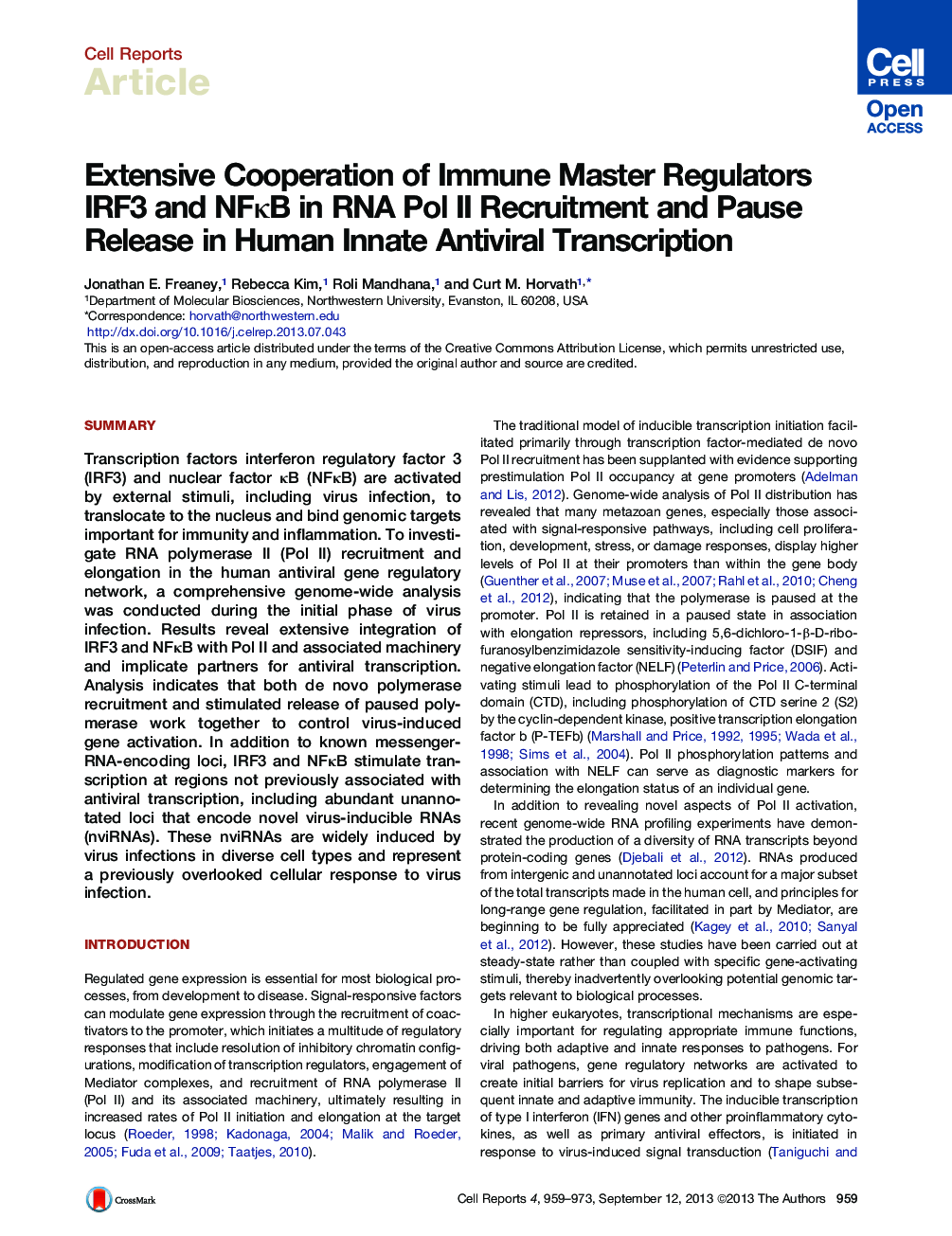| کد مقاله | کد نشریه | سال انتشار | مقاله انگلیسی | نسخه تمام متن |
|---|---|---|---|---|
| 2040810 | 1073130 | 2013 | 15 صفحه PDF | دانلود رایگان |

• A genome-wide atlas of human virus-induced transcription was constructed by ChIP-seq
• Infection activates widespread Pol II pause release and de novo Pol II recruitment
• The vast majority of virus-induced transcription occurs outside of known genes
• Data indicate numerous unannotated loci that produce virus-inducible RNAs
SummaryTranscription factors interferon regulatory factor 3 (IRF3) and nuclear factor κB (NFκB) are activated by external stimuli, including virus infection, to translocate to the nucleus and bind genomic targets important for immunity and inflammation. To investigate RNA polymerase II (Pol II) recruitment and elongation in the human antiviral gene regulatory network, a comprehensive genome-wide analysis was conducted during the initial phase of virus infection. Results reveal extensive integration of IRF3 and NFκB with Pol II and associated machinery and implicate partners for antiviral transcription. Analysis indicates that both de novo polymerase recruitment and stimulated release of paused polymerase work together to control virus-induced gene activation. In addition to known messenger-RNA-encoding loci, IRF3 and NFκB stimulate transcription at regions not previously associated with antiviral transcription, including abundant unannotated loci that encode novel virus-inducible RNAs (nviRNAs). These nviRNAs are widely induced by virus infections in diverse cell types and represent a previously overlooked cellular response to virus infection.
Graphical AbstractFigure optionsDownload as PowerPoint slide
Journal: - Volume 4, Issue 5, 12 September 2013, Pages 959–973